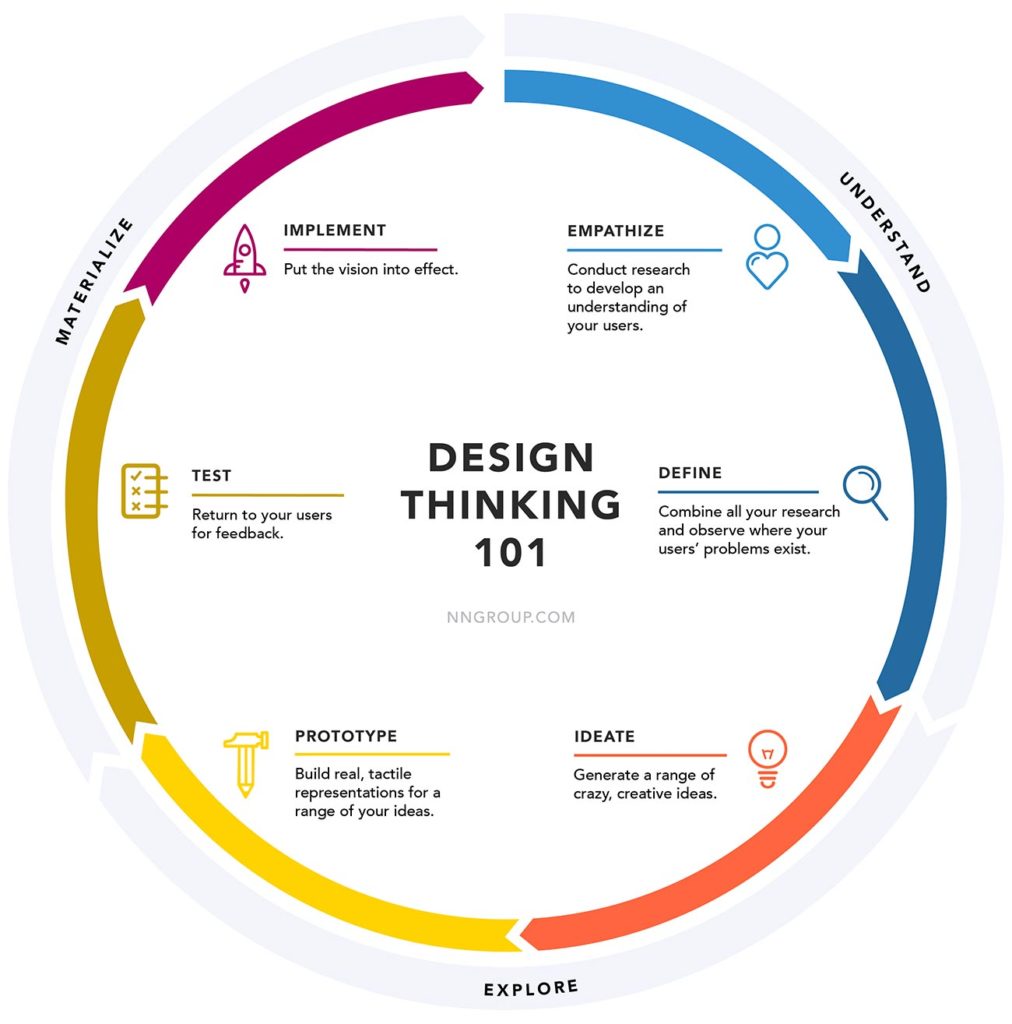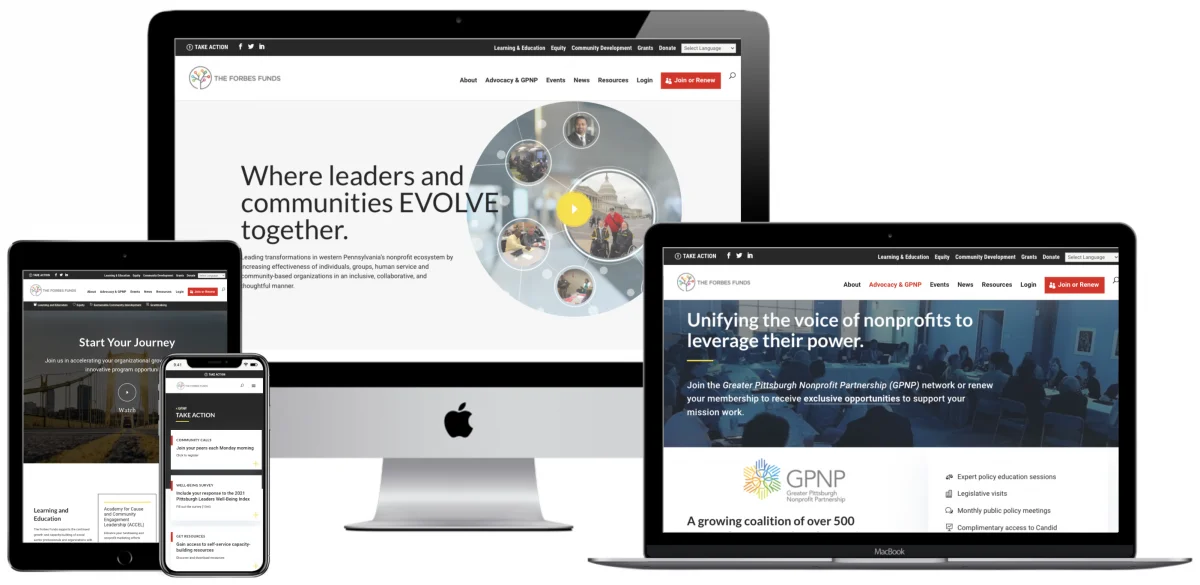Design should always focus on the user’s needs, solving problems and being a seamless and attractive part of the background. But how do you ensure that your product (or service) is well designed with great functionality, usability, beauty, and quality?
The tile of our piece promises a lot (and is quite long): ‘The benefits of collaborative brainstorming using design thinking to foster innovation and lasting impact” so let’s break it down. First, we are going to discuss the benefits of collaborative brainstorming and, second, the benefits of design thinking. Lastly, we will tie it together to show how using design thinking during collaborative brainstorming fosters innovation and lasting impact.
The benefits of collaborative brainstorming and brain trusts
I’m sure most people understand what brainstorming is. It’s essentially a collaborative activity where ideas flow. Some ideas are developed further in the process and others are put aside. The idea of brainstorming is to generate ideas or come up with prospective solutions (opportunities) to problems (or both). As the adage goes, ‘two heads are better than one’ and many brains are better than two!
If you set up collaborative brainstorming sessions, then you could have found a golden ticket to solving tricky problems. For remote teams, you won’t miss out on the benefits of collaborative brainstorming. This Harvard Business Review article talks about the benefits of collaborative brainstorming remotely and online.
So, how do you brainstorm or form a brain trust, which is a group of creative brainstormers who don’t have to keep great ideas to themselves?
Establish a goal: figure out what you want from the session, set a time limit, and make sure you lead the session to allow everyone to speak and for no one person to dominate the conversation. Have someone take notes that they can summarize and distribute later.
Don’t rush: have a time limit but understand that participant’s brains will continue to turn even once a session has ended (usually after a good sleep), so if you need to meet again for a brief period to come up with more ideas the next day or collaborate on a Google doc and add to the original notes, then create time for that extra brainwave.
Enjoy some food: food fuels the brain, especially the amino acid called tyrosine, which is found in foods such as bananas, almonds, pumpkin and sesame seeds, cheese, and avocados. So, you might want to have some healthy snacks on hand to lead your session.
Give drawing space: some people are verbal and others need to draw things out when discussing spacial awareness, especially for discussing ideas such as web design! Let your designers and creative people draw and talk through their ideas so everyone can get on the same page and visualize things better.
Eliminate distractions: switch off slack, emails, and pop your phones on silent when brainstorming. Working whilst distracted can have a deleterious effect on solving the problem at hand. Everyone’s brain needs to be in the game.
The overall benefits of brainstorming and brain trusts are that it encourages critical thinking, allows alternative perspectives, and builds trust and rapport within teams. There are more ideas on the table at the same time and ideas can be presented in a safe and non-critical space. Better ideas can be refined and honed into something greater, which benefits the company as a whole.
The benefits of design thinking
Now let’s define design thinking. Design thinking is where your designers move from the end of the process where there’s little input to the beginning (where they should be). Design and functionality create the perfect product (or service) and not having design as an afterthought. Design thinking is a ‘formalized framework of applying the creative design process to traditional business problems.’
So, it means that there’s a user-centric focus on problem-solving which leads to innovation and competitive advantage. It’s done through six steps that fall under three categories.
First, you understand the problem via empathizing and defining. Second, you explore the problem via ideation and prototyping. Finally, you materialize the concept via testing and implementing.
- Empathize: the research stage, understand what your users do, say, think, feel, how they use your product and what needs to improve.
- Define: combine your research and understand where your user’s problems are and what they need.
- Ideate: brainstorm ideas with total freedom to understand how to solve these problems.
- Prototype: build out some of the ideas and solutions to the problems so you can understand which solutions will work.
- Test: test your prototypes to see if these ideas solve the problems. Has your new idea improved the user experience?
- Implement: make the vision happen. Put it into effect. Has it worked? If not, back to the first step.

These steps aren’t entirely linear and you can go back and forth between steps until solutions are discovered. But the main focus is that the user is at the center of your design concepts. If it isn’t enhancing the experience of the user or solving their problems, then why are you doing it?
How does using design thinking in brainstorming create innovation and lasting impact?
Now you understand these two concepts separately, let’s bring it together. For most companies, their users (customers) will have problems they need to solve and those solutions can come about through collaborative brainstorming (in the ideate stage) as part of the design-thinking process described above. With design thinking, the user is at the center of the design. Everything is done to enhance the user’s experience.
Think of the multitude of kitchen gadgets out there on the market–ranging from the useful to the ridiculous. There isn’t much market for kitchen tools that aren’t easy to use and don’t enhance the cook’s experience. For example, you might not find a hand-held juicer, egg slicer, or garlic crusher useful but those tools might be useful in the disabled market so there is a market for those products. However, there aren’t many people that feel the need to own a banana slicer, a butter dispenser, or pizza cutting shears. Products (and services) have to be useable, marketable, and fill the void in the consumer’s life. Customers have to feel that whatever your business does helps them in some measurable way.
A great way to ensure that you’re coming up with good, useful ideas is via design thinking and collaborative brainstorming. How do these foster innovation and create lasting impact? Well, quality ideas and problem-solving based on your customer’s actual needs will create a lasting impact. The collaborative brainstorming process and design thinking are innovative in that they will put you ahead of your competitors because you will create useful solutions to problems, solutions that will adapt over time to keep your ideas fresh and current, delivering lasting impact.
How we use these concepts to build websites at Key Medium
Whenever we design a client’s website, we go through the design thinking process to understand what it is that your customer base and user needs. We design our websites around what the client’s customers need and not just on what looks good (although, our websites look fantastic). Great user experience is easy to use and navigate, solves the user’s problems, and looks attractive and appealing. If you want to take a human-centered approach to design for your next website, just get in touch.

Elaine Frieman holds a Master’s Degree and is a UK-based professional editor, educational writer, and former marketing agency content writer where she wrote articles for disparate clients using SEO best practice. She enjoys reading, writing, walking in the countryside, traveling, spending time with other people’s cats, and going for afternoon tea.

